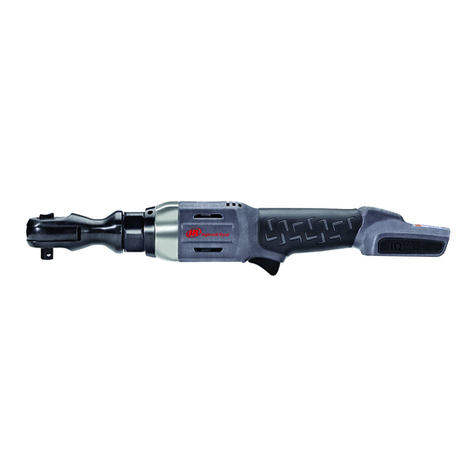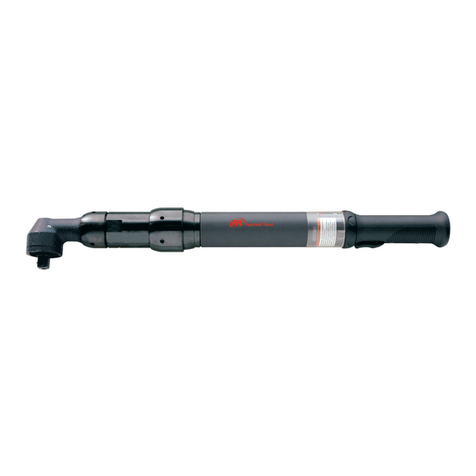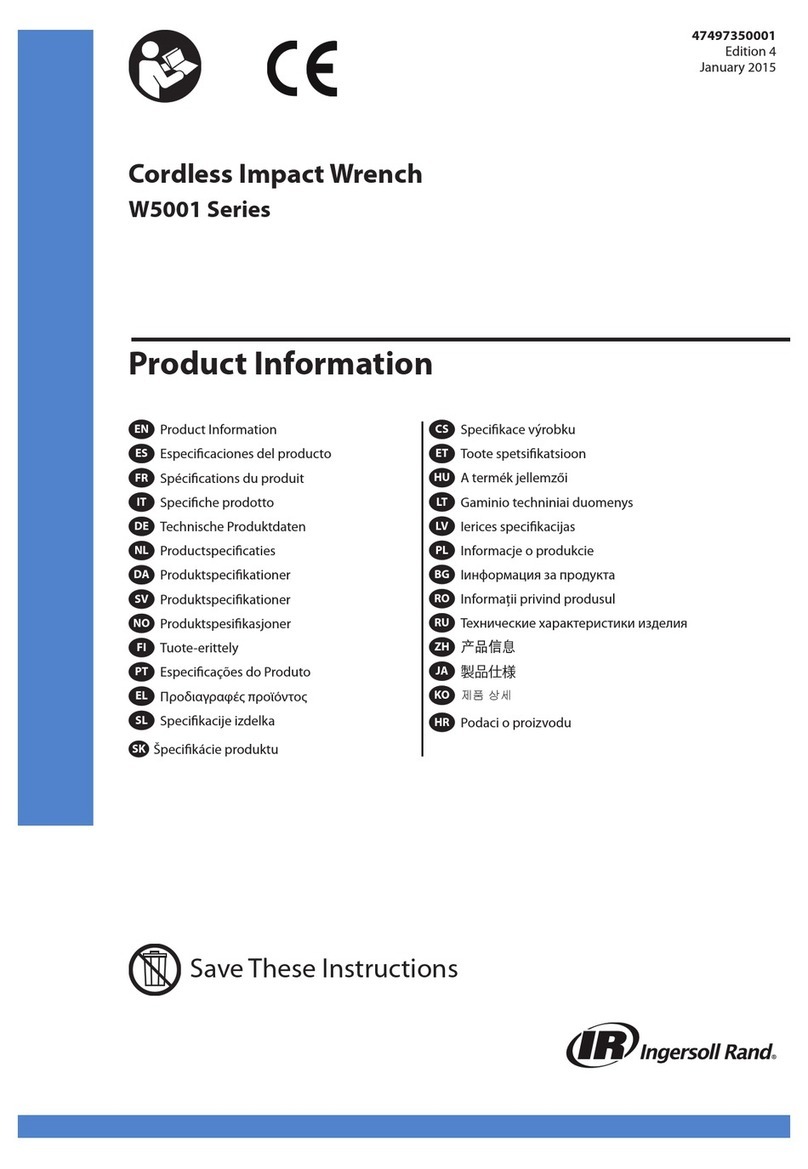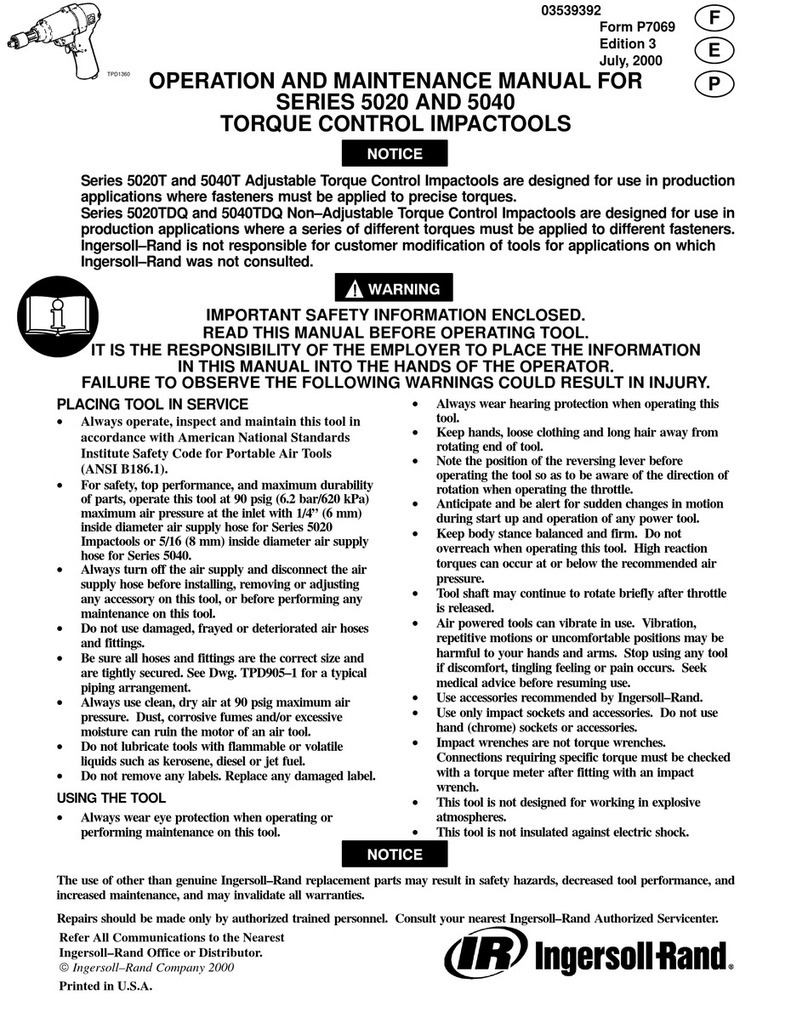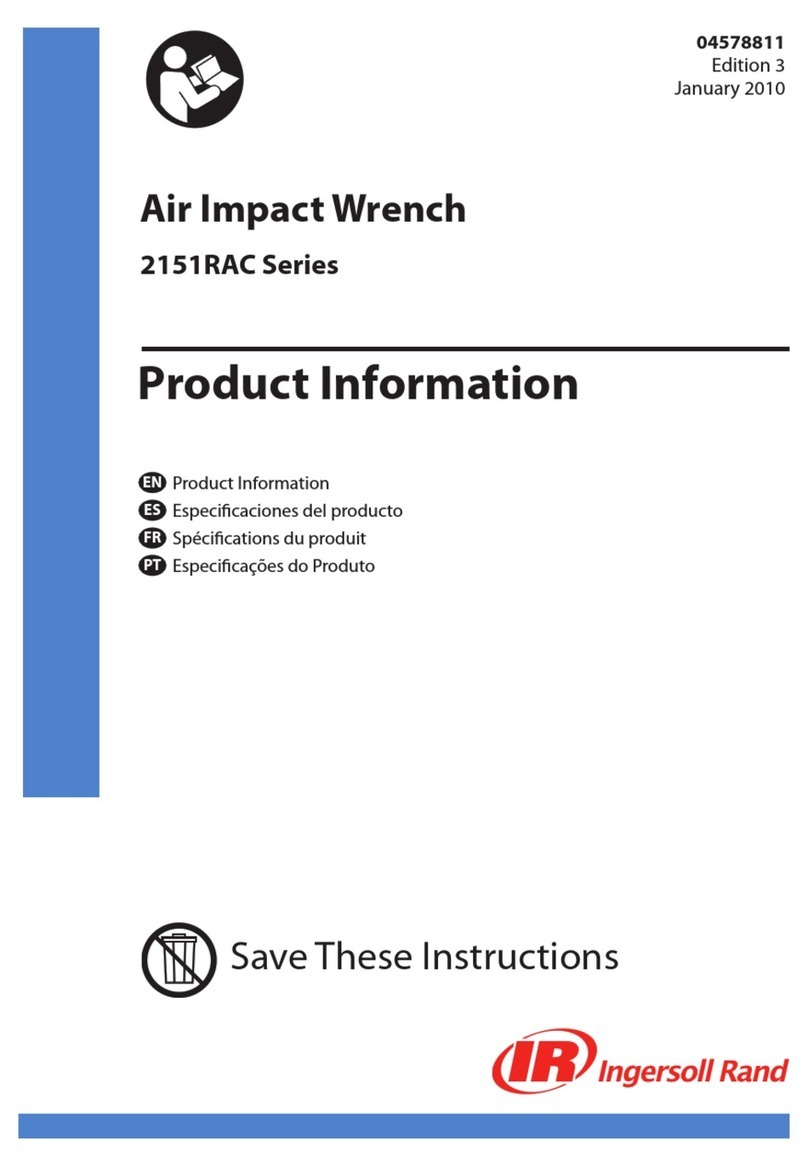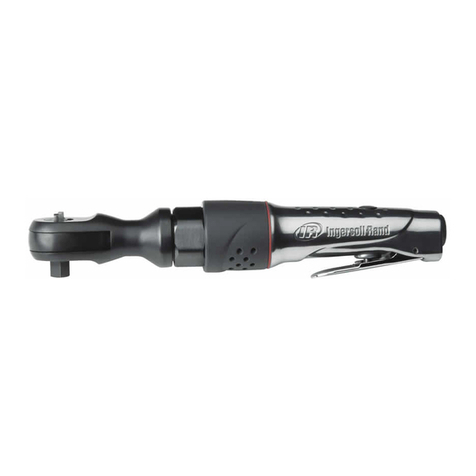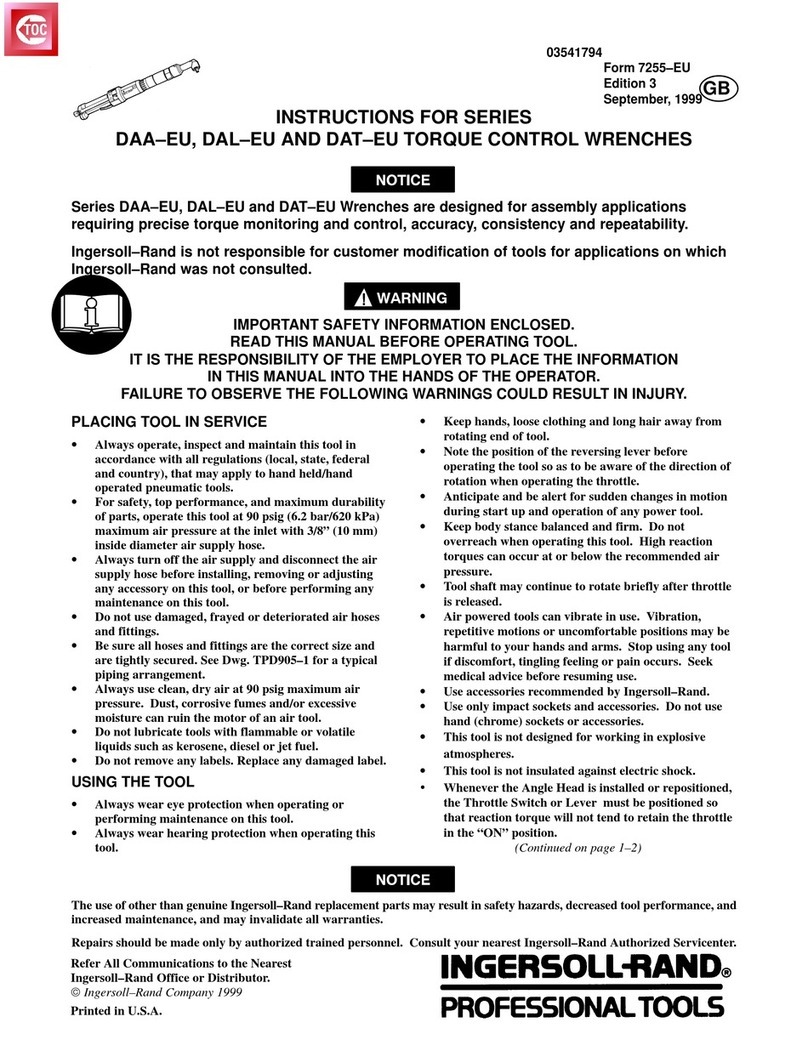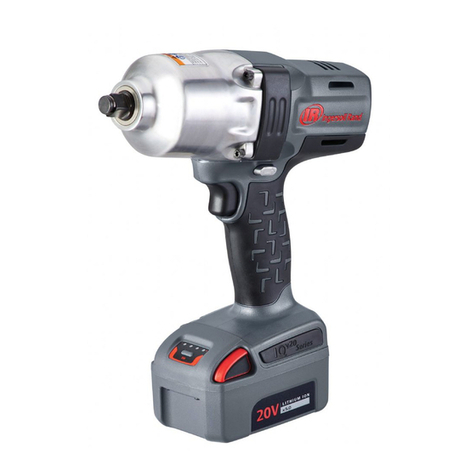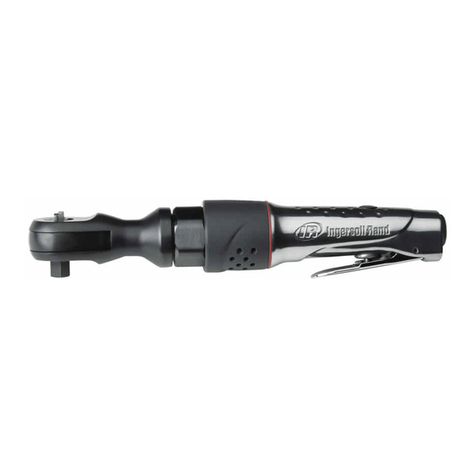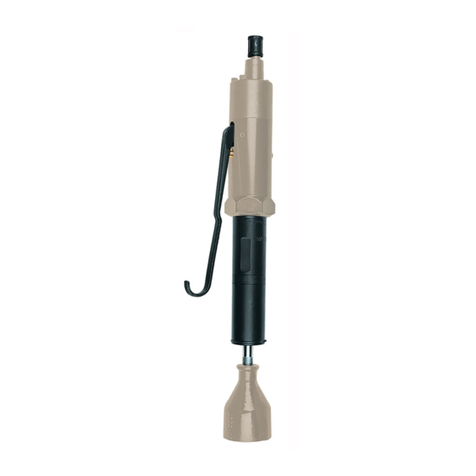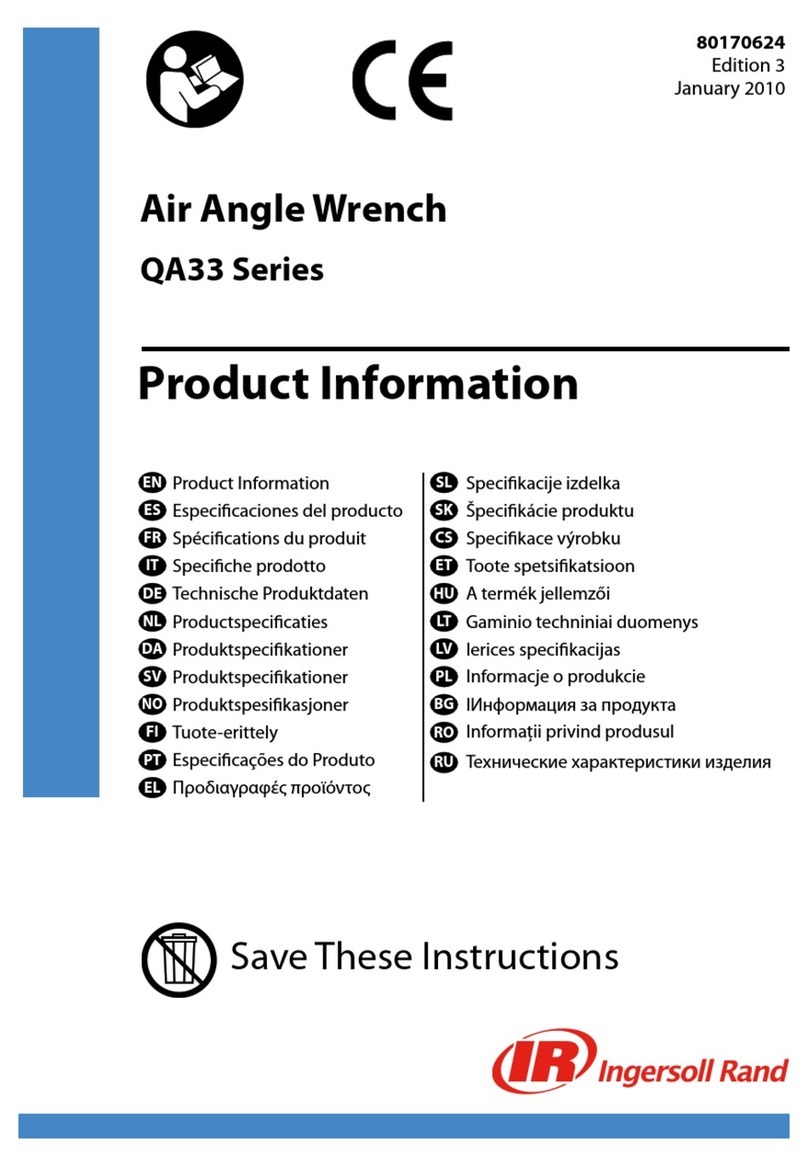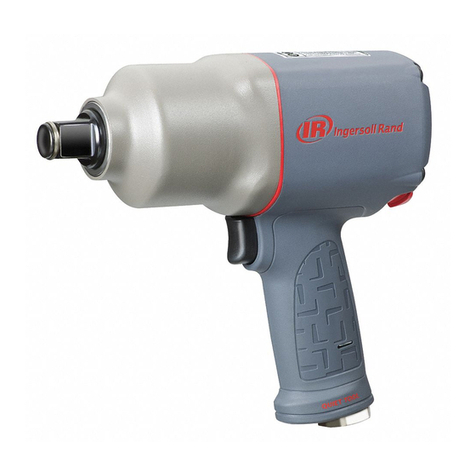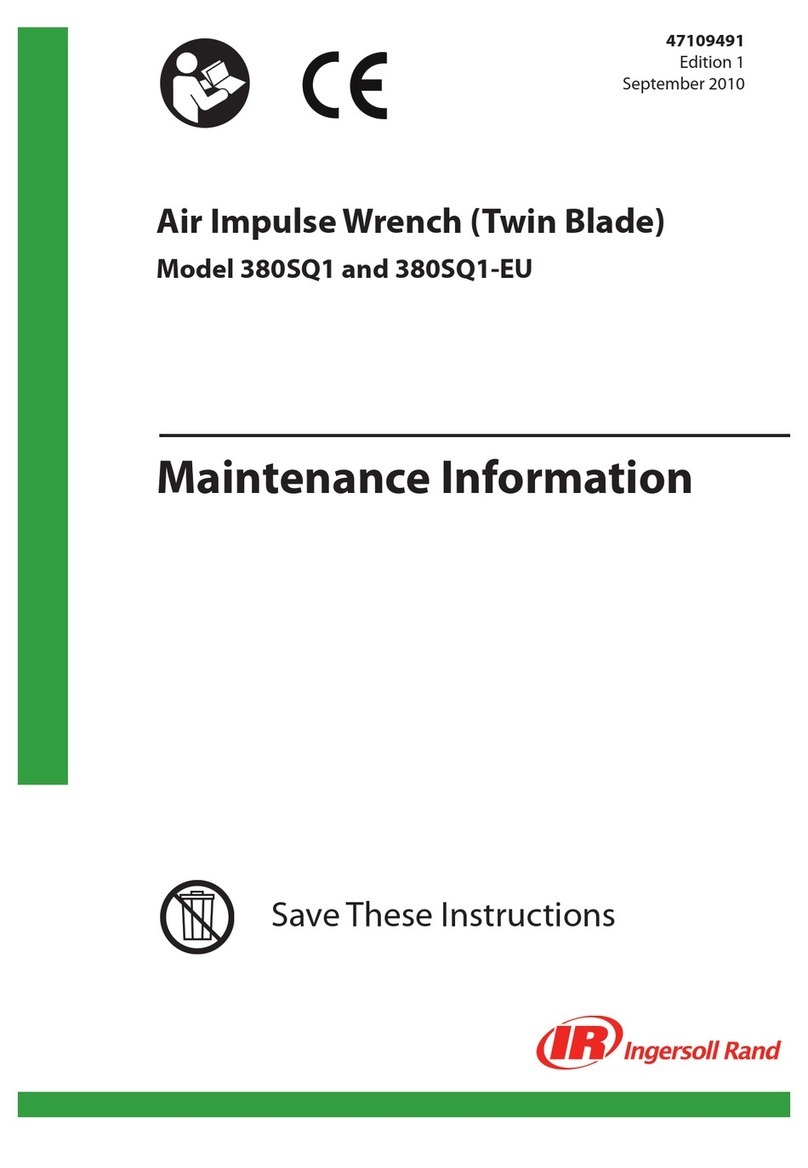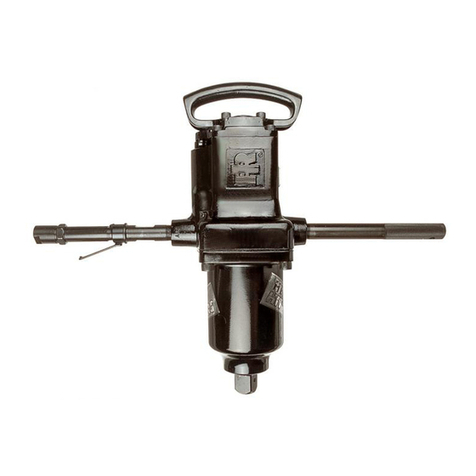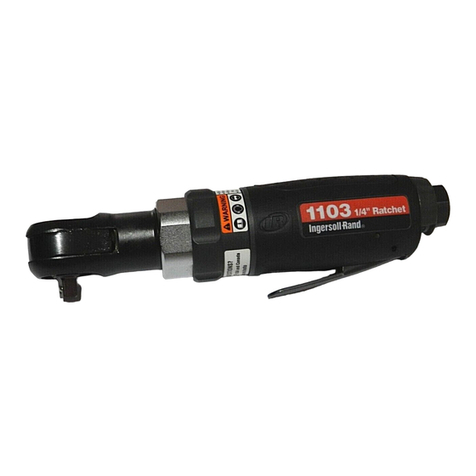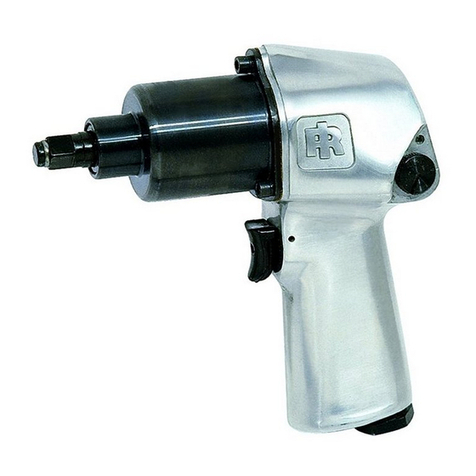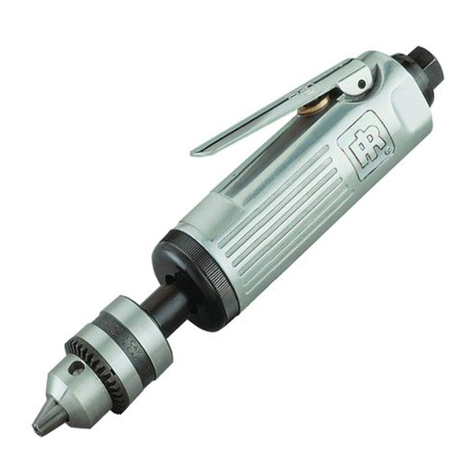
1–2
FAILURE TO OBSERVE THE FOLLOWING WARNINGS COULD RESULT IN INJURY.
USING THE TOOL (Continued)
•Consider work area environment. Don’t expose
power tools and chargers to water. Keep work area
well lighted. Do not use tool in explosive or flam-
mable atmospheres.
•Keep bystanders and children away. Do not permit
unauthorized personnel to operate this tool, or touch
tool or cord.
•Store idle tools. When not in use, tools should be
stored in a dry, high or locked up place, out of reach
of children.
•Don’t force tool. It will do the job better and more
safely at the rate for which it was intended.
•Use the right tool. Do not force a small tool or at-
tachment to do the job of a heavy–duty tool.
•Do not use a tool for a purpose for which it is not
intended. Example: Do not use a screwdriver as a
drill.
•Dress properly. Do not wear loose clothing or jew-
elry. They can be caught in moving parts. Rubber
gloves and non–skid footwear are recommended
when working outdoors. Wear protective hair cover-
ing to contain long hair.
•Secure work. Use clamps or a vise to hold work.
Operators often need both hands to perform job func-
tions.
•Don’t overreach. Keep proper footing, balance, and
a firm grip on the tool at all times.
•Maintain tools with care. Keep tools clean for bet-
ter and safer performance. Follow instructions for
lubricating and changing accessories. Inspect tool
cords periodically and if damaged, have them re-
paired by an authorized service facility. Inspect ex-
tension cords periodically and replace if damaged.
Keep handles dry, clean, and free from oil and grease.
•Remove adjusting keys and wrenches. Form habit
of checking to see that keys and adjusting wrenches
are removed from tool before turning it on.
•Avoid unintentional starting. Don’t carry tool with
finger on switch.
•Do not drop or abuse the tool.
•Whenever a tool is not being used, position the
Power Switch to the “OFF”position and unplug
the power cord.
•Stay alert. Watch what you are doing. Use common
sense. Do not operate tool when you are tired.
•Check damaged parts. Before further use of the
tool, a guard or other part that is damaged should be
carefully checked to determine that it will operate
properly and perform its intended function. Check
for alignment of moving parts, binding of moving
parts, breakage of parts, mounting, and any other
conditions that may affect its operation. A guard or
other part that is damaged should be properly re-
paired or replaced by an authorized service center
unless otherwise indicated elsewhere in this operation
manual.
•Have defective switches replaced by an authorized
service center.
•Do not use the tool if the switch does not turn it on
and off.
•Whenever the Angle Head is installed or reposi-
tioned, the Throttle Lever must be positioned so
that reaction torque will not tend to retain the
throttle in the “ON”position.
•When installing or removing the output device on
any tool, ALWAYS grasp a metal component of
the tool while tightening or loosening the Coupling
Nut or Spindle Cap. Acceptable clamping
locations include, but are not limited to, the hex on
the Gear Case, the Tool Hanger, the Torque Reac-
tion Arm or any metal Mounting Plate. NEVER
grasp the composite tool body or handle in vise
jaws to restrain the torque of the Coupling Nut or
Spindle Cap. Such practice will result in damage
to the tool.
•Do not use power units and gear trains that exceed
the capability of the output device.
•The Tube Nut Attachment has an opening on the
front side for construction and application pur-
poses. DO NOT, under any circumstance place
your fingers in this opening.
•The Torque Reaction Bar must be positioned
against a positive stop. Do not use the Bar as a
dead handle and take all precautions to make cer-
tain the operator’s hand cannot be pinched be-
tween the Bar and a solid object.
•When operated continuously for long periods of
time, Series D Nutrunners may become hot at the
spindle end of the tool. Take all precautions neces-
sary to avoid skin contact with the hot surfaces.
Prolonged contact may result in burns.
•All Series D Torque Control Wrenches and Nu-
trunners with reverse capability have rotational
arrows molded into the housing in the area of the
reversing mechanism. When the direction switch-
ing device is positioned nearest the molded circu-
lar arrow with an “F”in the center, spindle rota-
tion will be forward or clockwise direction. When
the direction switching device is positioned nearest
the molded circular arrow with an “R”in the cen-
ter, spindle rotation will be reverse or counter-
clockwise direction.
•Use only impact sockets and accessories. Do not
use hand (chrome) sockets or accessories.

